Product Reviews
Hi-Lux Optics - Wm. Malcolm Scope 6X Short Scope, SPG Sales Spotting Board, Accurate Molds’ 52-460N
column By: Steve Garbe (Photos by Sheryll Garbe), and Mike Nesbitt | June, 24
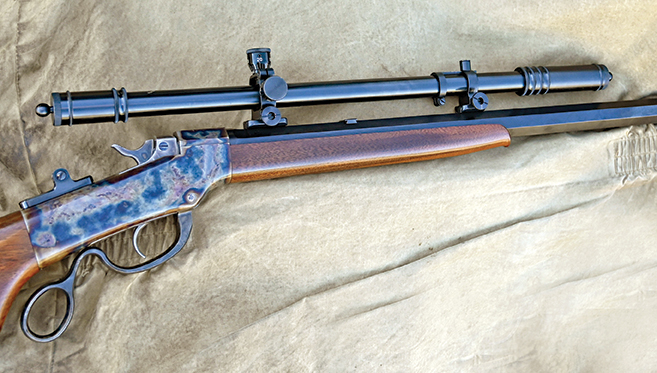
Hi-Lux Optics
Wm. Malcolm Scope 6X Short Scope
Steve Garbe
We received a Wm. Malcolm scope from Hi-Lux Optics for review and decided to put it through its paces. This is the 6X Adjustable Parallax Model that resembles a Winchester A5 or a Lyman Junior telescope, but is not a close copy of any particular type. However, it does have the old “look” and is very appropriate on any vintage-style rifle. The mounts were a close copy of the old Lyman “Target Spot” style with the split that allows the mount to be locked with a set-screw. Overall length of the scope is 18½ inches and the sample was the blued model. There is also a two-tone version available with a brass eyepiece and objective. The scope weighed 1 pound, 7 ounces and Hi-Lux mentions in the furnished literature that the Wm. Malcolm scope is nitrogen purged, shockproof and waterproof. The scope came with a set of blocks for an octagon barrel along with 6-48 mounting screws. I checked that the mounts would fit standard Unertl-style blocks with the familiar half-moon cut and they did. Threaded and knurled scope caps covered both the eyepiece and objective of the scope.
The first thing I was curious about was what the focusing ranges were. I managed to get the Malcolm to focus down to 15 feet with good clarity, which is more than adequate for 50-foot gallery shooting. On the far end, the scope would focus to basically infinity and parallax could be taken out past 1,000 yards. The eyepiece focus and parallax adjustment was smooth and positive. Lens quality was good with just a small amount distortion at the edges. The crosshairs were what I would term “medium” thickness, very useable for both hunting and target work.
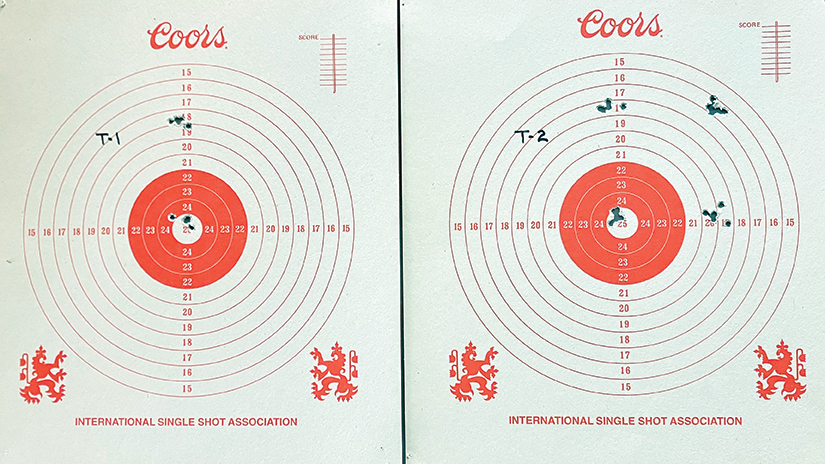
I wanted to check the repeatability of the mounts and did two tests with the scope installed on a favorite Ballard 22 rimfire. Target One was done firing one shot at 45 yards, adjusting the elevation one full turn, firing another shot and then adjusting the elevation back down one full turn. No effort was made to compensate for backlash and the shots were nicely grouped together at their respective sight settings. These are “no-click” mounts and have adjustable collars allowing one to index the graduations to zero, once windage and elevation zeros are established.
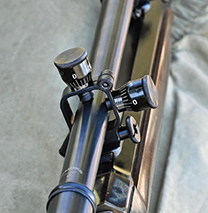
Over-all fit and finish of the Wm. Malcolm scope was very good, as was the lens quality. I did contact Hi-Lux to enquire as to whether the scope would be safe for air rifle use and they said that the lenses were supported to handle the recoil from both pneumatic and springer air rifles. Given that the scope slides under recoil there’s no reason it couldn’t easily handle the heavier recoil of large centerfire rifles as well.
I feel the Wm. Malcolm Hi-Lux Short Rifle scope represents very good value for the money; the suggested retail is $400. I found it to be a nicely finished, accurate scope, well made and backed up with a limited lifetime warranty. Contact: Hi-Lux Optics, 3135 Kashiwa Street, Torrance, CA 90505. Phone: 310-257-8142. Website: hi-luxoptics.com. They have a full line of both modern and vintage-style scopes to suit a wide range of applications and tastes
SPG Sales Spotting Board
Steve Garbe
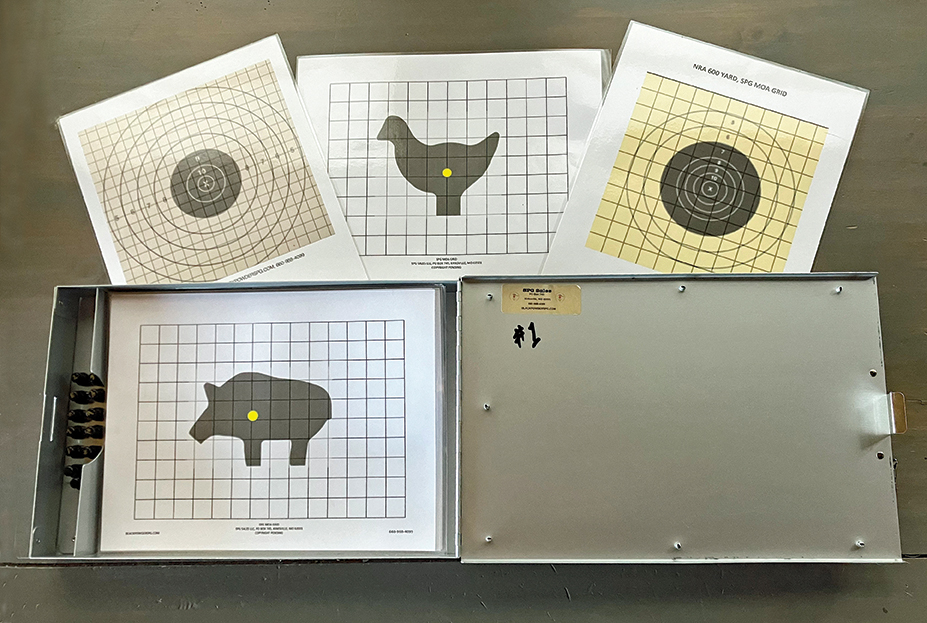
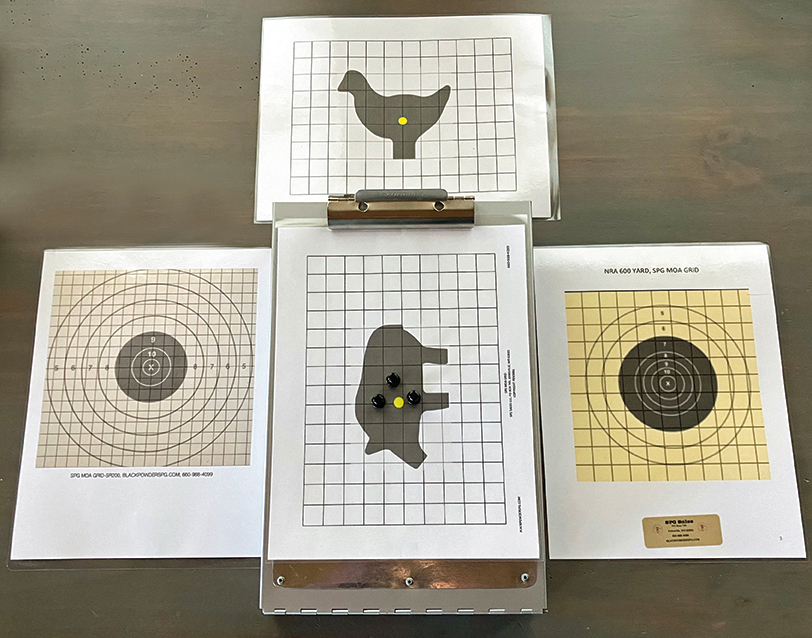
What I like the most about the SPG Spotting Board is that everything – target sheets, pins, scorecard clamp – is contained in the sturdy aluminum body of the board itself. This means that I can throw it in with all the other plunder I take to a match and not worry that things will get lost or broken. Believe me, things will get lost or broken right before the match starts!
The magnetic pins provided with the board are another great idea; no more wearing out of spotter sheets by continually punching holes in them. Also, the powerful magnetic pins stay put even when the board is dropped. I know because I specifically tested for this, as it seems like I can drop a spotting board numerous times during a match.
SPG Sales provides spotting sheets for Silhouette, Schuetzen, gongs and a variety of other targets, all done with MOA grids superimposed. This could easily be the last spotting board you may have to buy, it’s that well made. Contact SPG Sales, P.O. Box 745, Kirksville, MO 63501. Phone: 660-988-4099. Website: blackpowderspg.com. The price for the SPG Spotters Board is $95, plus shipping and handling. Check out their website and have a gander at the other great merchandise they have for the black powder shooter.
Accurate Molds’ 52-460N
Mike Nesbitt
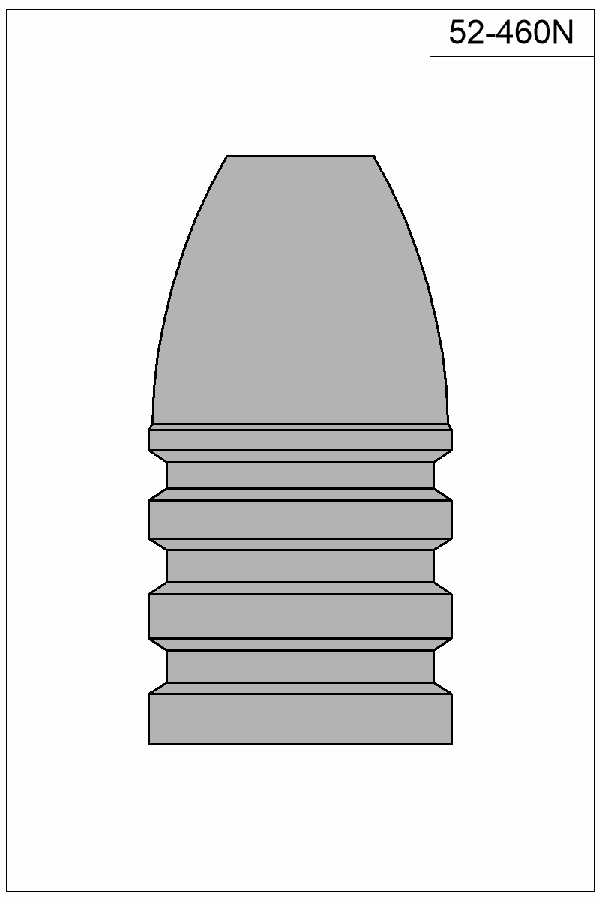
The mould I received is a single cavity style using aluminum blocks which fit RCBS handles. Accurate Molds will make the mould blocks of aluminum (which I really like), brass or steel. Tom lists these bullets as .52 because they are made to drop from the mould at .515 diameter, which is suitable for 50-70 rifles from the 1800s. Today’s 50-70 barrels are generally much tighter than that, mostly with a groove diameter of .510 or even less. So, the mould I ordered was made to drop the bullets at a .512 diameter, which is the same as my sizing die for the .50 caliber rifle bullets. That’s one of the nice things about getting bullet moulds from Accurate Molds. Every mould is a custom order; you specify the diameter you want and you also specify the lead alloy you intend to use, because different alloys have different shrink rates. To view the Accurate Molds catalog, look on their web site at accuratemolds.com.
Having the bullets drop from the mould at .512 also makes this bullet available for pan lubing instead of using the sizing/lubricating die. Every now and then I like to pan lube a batch of bullets just to get them ready for loading.
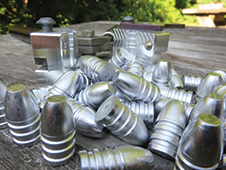
Bullets from the new mould were cast, lubed, and loaded into Starline’s 50-70 cases. The load used was 65 grains of Olde Eynsford 2Fg powder. At the range it was quickly found that the 465-grain bullets were grouping well at 100 yards, although the groups were slightly higher than where the 450-grain bullets were hitting. While we should expect the 465-grain bullets to be going just a bit slower than the 450-grain bullets, there is apparently just a slight difference in the rifle’s recoil which puts the gun’s muzzle slightly higher when the bullet leaves the muzzle. That’s just a very quick guess and why the new bullets impact higher doesn’t actually matter, but we will check the velocity in the future with a chronograph. To make a correction, the mid-range tang sight was lowered by one minute and that put bullets into the 10-ring for the next group.
Not all of my considerations for these new bullets are based on target shooting. Hunting still enters my mind and the new 465-grain bullets should have one particular advantage over the 450-grain bullet; that is the wider flat point or the “meplat” of the bullet. Bullet No. 52-450L2 has a flat point that is .18-inch wide but the new No. 52-460N has a .25-inch wide flat point, which offers almost twice the square area. That’s enough to make a difference on impact and the new 465-grain bullets should hit a game animal with greater “smack.” The 50-70 is a fine hunting cartridge, but one complaint is that game sometimes doesn’t show signs of a hit right away.
What I can say is, with No. 52-460N I believe I’ve found the bullet I wanted for general use in the 50-70 and I’ll give it a very good try with a lot more shooting. That can be quickly translated into saying you will be hearing more about both this new bullet and my 50-70 Sharps rifle.
Contact Information:
Accurate Molds, LLC
PO Box 17, Centerville, Utah 84014
Website: accuratemolds.com
Email: tom@accuratemolds.com
PLEASE do not attempt to call for any other purpose.
Tom is virtually deaf, so the phone is useless to him.


